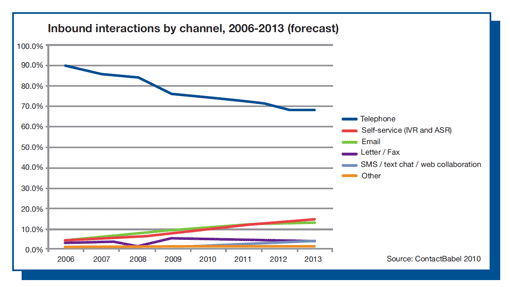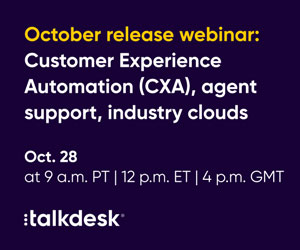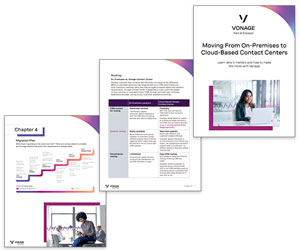“Email is for old folks,” I was told recently. “The younger generation are more interested in texting, instant messaging or social media.”
So is email on its way out? We decided to ask our community.
You can’t replace a phone call

Zoe Kendall
In my opinion, far too many conversations are had on email. Call me old-fashioned, but I would far rather pick up the phone, so much can be missed or misunderstood!
Email is fantastic for confirming information or reminding people, but cannot replace that good old phone conversation.
Zoe Kendall
Email is not likely to challenge for the top spot
If email was a football team it would be Tottenham Hotspur – firmly in the top four communication channels for customers, but not likely to challenge for the top spot.
Last year we ran a survey to look at the customer experience in a multi-channel world and invited more than 2,000 consumers to talk about their preferences. Email was the fourth most popular channel, behind speaking with a contact centre agent on the telephone, visiting a physical location, or the company website and in front of IVR systems.
33% of respondents to our survey would choose email as their channel of choice to interact with organisations and, interestingly, this was consistent across all age ranges (38% of 18-30 year olds; 33% of 31–45 year olds and 30% 46-65 year olds) and vertical markets (financial services, telecoms, retail, travel and insurance).
Poor response times are driving up call volumes
Fail to meet their expectations and they will likely pick up the telephone. In fact, 53% of respondents commented that they would revert to the telephone if their email was not dealt with to their satisfaction.

Craig Pumfrey
Social media is the least-used channel
The rise in profile and popularity of new channels, particularly social media, is one of the reasons that is prompting debate over the death of email, not only in the contact centre but in commerce in general. However, our survey revealed that currently social media is perceived as one of the least useful for accomplishing tasks and is the least-used channel, with only 3% of respondents using it.
Craig Pumfrey, Director of Marketing & Communications, NICE Systems (www.nice.com)
Email is here to stay
Email is here to stay; social media isn’t a replacement, it just means our customers have more opportunity to communicate with us.
Sent in on Twitter by @Carlz990
If customers want email we have to deal with it
As long as customers want to email companies, companies will have to learn to deal with it. Still not easy to deal with.
Sent in on Twitter by @PaulSweeney
Email volumes will drive up in the short term
I’m a great fan of email and in the short term I think it’s going to drive up quite dramatically, particularly with things like web-based forms on websites. The challenge is, it has been put to me recently, “email is for old folks”. It’s quite interesting, my daughter, who’s 16, has got an email account, my son, who is 13, doesn’t. He does everything either through text or chat, and I know that chat is one of the channels that certainly in sales centres is growing quite dramatically. So I think we are going to see a big continuation or growth of emails and perhaps a flattening-off as text or chat increases.

A mean average of 10.4% of inbound interactions to UK contact centres are via email (20% in retail and 19% in technology/media/telecoms).

Steve Morrell
Since 2003, there has been a 37% increase in the number of companies offering email, but a 189% increase in the number of email interactions, showing a growing acceptance amongst the customer base due to an improvement in usability and effectiveness. 15% of emails are answered within an hour, and a further 43% within a working day. Still, 20% of contact centres do not offer email as a channel at all.
Moving forward, inbound email is more suitable for B2B and complex enquiries (including complaints), as well as confirmation of interactions initiated through other channels. It is likely to poach work traditionally carried out by white mail / letter, but will itself relinquish some of its own current tasks to web chat, which offers a more immediate non-voice channel. Email will, of course, continue as a very strong outbound channel.
Steve Morrell, ContactBabel (www.contactbabel.com)
It’s too early to write off email
I think it’s far too early to write off email with any great certainty. There are many factors driving both its sustained use and potential decline.
As far as organisational use is concerned, email has provided a universal communication platform that links people within and beyond the firewall in a reliable, secure way.
Most would agree that there is too much of it and that being included in email threads happens far too often. But it’s proven effective across all operating systems and devices (desktop to mobile). In contrast, social messaging is still trapped at platform level, e.g. Facebook messaging, Skype.
The only trend that appears to be eating into this volume is enterprise social collaboration. So in case studies, Chatter/Yammer-style deployments which mimic social network communication behaviour are reported to be changing closed communications such as email into more publicly available sources of knowledge via a more collaborative working style. However, these experiments are still very much in the minority.
If social media takes off, email volumes will decline
If the social business model really takes off over the next few years, then email volumes could significantly decline within organisations, since this seems to be a common outcome of this new style of working. However, how organisations communicate externally will remain an issue and email’s future grip on that market depends on what alternatives emerge.
So for now email looks likely to remain a familiar habit when at work.
Consumer communication behaviour is another matter. Yes, there are clear generational preferences. However, if an organisation does not offer these preferences, e.g. two-way SMS interaction, then those customers will need to use whatever is offered anyway.
The email box on the website
I would also add that I’m not so sure that all consumers readily associate the style of inbound customer service email with their normal use of email. For a start, it’s uncommon to be able to initiate contact using your own preferred email client. Normally it’s an online facility embedded in the Customer Service area as a dialogue box, without many of the features of a dedicated email client, such as the ability to cc an email. Also the ability to add a file is not that common.
Shouldn’t email be a two-way function?
Many find the automated ‘do not respond’ return email a further frustration since the whole point of email is that it is an intuitively two-way process.

Martin Hill-Wilson
That said, as more customers relate to brands online (most recent UK retails figures show 50% of our monthly disposal income is now spent online) it is natural that customer service needs to begin on that channel. Since we are a while away from online voice being common, text rules. If there is competition to non-real-time email then it’s real-time web chat, which is certainly gaining traction. If immediate resolution is mainly expected then web chat clearly wins. So email might decline as a result. But if you want to spend time gathering facts or thinking through what you want to say, email remains first choice. Also I’ve yet to see this work on a smartphone so maybe this is an inhibitor (we are now at 50% smartphone penetration in the UK, according to latest stats).
SMS text messages are declining
So what is the future for email? I think it is important to remember that its commonality with other text channels could well mean it does not die. Rather it mutates. Yesterday I read that global SMS volumes have declined (from a massive volume that social channels don’t even come close to!). However, it’s an important revenue stream for the operators, so the advice was to mash in some of the social features that has made social-network-based messaging an attractive alternative. I can imagine the same insights are being applied by Google, Microsoft and Lotus on their email roadmap.
Martin Hill-Wilson, Brainfood Extra (www.brainfoodextra.com)

Ken Reid
Email takes longer to handle than a phone call
The use of email is increasing, but email takes 2 to 3 times as long to handle as a phone call. Blending tasks, perhaps by following an email with an outbound phone call, could be cheaper and more efficient.
Ken Reid, rostrvm (Rostrvm Solutions)
Poor email response times are holding it back
As an industry we have stunted the growth of email by poor response times.
Email promised a revolution in customer service; rather than calling, sitting in queues and getting frustrated, customers would be able to send an email and get on with their lives. But the reality is that too few companies geared up properly for email and did not effectively blend it into their communication workflow.
Emails are put on the ‘back burner’
Emails are often put on the ‘back burner’, leaving customers frustrated with no idea when and if their query will be resolved.
Take EDF Energy: 6 months ago I sent an email to EDF regarding a simple account set-up issue, hoping for immediate resolution. I received a standard email response stating I would receive a reply ‘within 2 weeks’. Two weeks later, frustrated with still no response from EDF, I emailed again, eventually receiving a reply stating my issue was being looked into and I would be contacted in due course. Four months later I was still waiting and my account with them was still not live. So, instead, I tried the call centre and got an instant resolution to my request. I still prefer to send an email because it suits me to deal with admin in the evening, outside of working hours, but why can’t I get a resolution or even a response?

Susannah Richardson
Ford Retail, in contrast, demonstrates how email can be a very effective customer service tool: to support their online car retail operation, emails are blended in a multi-channel queue for agents alongside calls. Emails are responded to in seconds and the management team proudly talk of customers who have been taken aback by how quickly an agent has responded to their query, which has had a massive impact on sales.
But the reality is that too few companies are geared up properly for email, their processes remaining unchanged and their technology inadequate, so customer emails go unanswered.
Social media is the way forward
Now social media is promising a revolution in customer service; the difference being that if queries aren’t resolved, the online audience quickly hears about it. As an industry, will we do better at blending this channel into our customer service processes or will we stunt the growth with poor response times as we have done with email?
Susannah Richardson, Director of Marketing mplsystems (www.mplsystems.co.uk)
Email is just another contact channel

Carl Adkins
Like with any contact channel, there are pros and cons associated with email. Amongst the positives are that it is a more cost-effective customer contact channel for companies than the phone; it is also a non-real-time communications medium, providing greater flexibility when it comes to workforce scheduling. The fact that it is not real time is also a negative, though – making email unsuitable for handling many complex queries, and in situations where callers need personal empathy or reassurance.
But at the end of the day, email is just another contact channel. Phone, email, social media, web chat, fax, self service….. rarely does an effective customer contact strategy rely 100% on just one channel. The skill is in understanding customers’ needs, knowing when it is appropriate to use different channels, providing sufficient channel choice, and giving customers a comparable quality experience regardless of the channel used.
Carl Adkins, CEO, Infinity CCS (www.infinityccs.com)
Instant messaging rules
I have just discovered you can Instant Message the Vodafone contact centre. This is a call-centre revolution. So much better than calling.
Sent in on Twitter by @izakaminska
Email is far from dead, but it is slow
Our recent research into technology adoption trends in financial services contact centres showed that 79 per cent of organisations use email, and are more likely to use it than outbound telephone as a method of engagement. On the other hand, other channels are rapidly catching up, and with good reason. Contact centres have twin aspirations – to improve the customer experience, but at a cheaper cost.
Email is slow
The problem with email as a customer service channel is that it is typically slow. It is slow to create, slow to get a response and often ends up with the customer having to call the contact centre to clarify any details or to pass security checks (especially in financial services). Email is convenient for non-urgent queries and is now expected by consumers as a channel. Customers can send them in their own time and everything is recorded in writing, and also contact centres can prioritise queries by value or urgency.
However, for more complex interactions, it is a bit of a hindrance if managed poorly. A five-minute telephone call could solve an interaction that takes place over a number of days on email.
Instant messaging is becoming the contact centre’s channel of choice

Mark King
Our research, however, did find that instant messaging (IM) and social media are slowly creeping up as the channels of choice for the surveyed organisations. Currently, around 18 per cent and 20 per cent of financial services contact centres use IM or some form of social media, respectively. In the next 12 to 18 months, IM will be the most popular new channel, with almost one in five contact centres in the financial services industry planning to implement it.
IM, as an instant, less costly method of interaction, is slowly becoming the contact centre’s channel of choice, not only serving to alleviate cost but also to deliver a personalised and one-to-one level of communication achieved previously only via telephone or face-to-face.
Mark King, Senior VP Europe and Africa, Aspect (www.aspect.com)
So what’s your opinion? Please leave your comments in an email to Call Centre Helper
Author: Jo Robinson
Published On: 21st Mar 2012 - Last modified: 21st Oct 2024
Read more about - Technology, Alvaria, Carl Adkins, Craig Pumfrey, Customer Experience (CX), Email, IFS, Infinity CCS, Ken Reid, NiCE, Rostrvm, Social Media, Steve Morrell, Susannah Richardson




















Our research into the use of technology in contact centers shows two clear conclusions:
1. volumes of interactions through ALL channels, including telephone and emails, is expected to rise over the next 2 years
2. each new channel, and I also count social media as “just another channel (albeit it slightly different in nature)”, doesn’t take away from other channels and contributes to an ever increasing volume of interactions
Maybe volumes would fall if companies got it right more often and gave consumers less reason to interact…
Email is an established means of communications just like phones, letters, IM etc. The trick now is to work out which one best suits your needs, not choosing one over the other due to fashion etc.
Emails are great for sending details, where phones are great for clarifications. IM is great for simple answers.
Time is the other issue. Phones for an immediate answer, IM for when a few minutes doesn’t matter, email for when a few hours is ok. Letters for when archiving is the most important element.
Teaching people to use the right medium in the right circumstances is the next challange!
We stopped sending out letters as it was to costly but I don’t think email will ever really disappear. I do think they will decline unless there’s more innovation. Email clients still seem to be stuck in the early nineties, they haven’t moved or brought in the features that have made social media so effective. Gmail introduced threaded conversation which is awesome but it needs more.
Agree with Oli above that also email is for messages that don’t need immediate replies or for archiving.